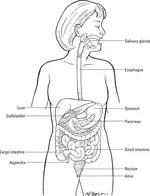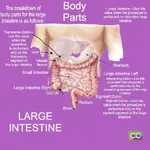ENDOSCOPY PROCEDURES - General Coding Guidelines:
1. Procedures like venous access, infusion and injection, non-invasive oximetry, anesthesia provided during endoscopy procedures are considered as part of the procedure.
2. If the same therapeutic endoscopy procedure is performed repeatedly in the same area, Bill the service once. If different therapeutic procedures are performed multiples endoscopy codes can be used accordingly.
3. Diagnostic endoscopy is always included in the therapeutic endoscopy.
4. When the small intestine endoscopy CPT ranges from 44360 - 44386 is performed as part of another major procedure then endoscopy is considered as part of the procedure, hence should not be billed separately along with more extensive procedures like enterostomy etc.
5. When diagnostic endoscopy of the hepatic/ biliary/pancreatic system using separate approach is performed – append modifier 51.
6. When a biopsy is performed and followed by excision/ destruction/removal of the biopsied lesion, then the biopsy is considered as part of the procedure should not be billed separately.
7. Bleeding occurs as a result of endoscopic procedure and control of bleeding in the same session of other major endoscopy procedure is considered as part of the procedure. If the bleeding control is performed in separate sessions following endoscopy procedure append modifier 78 (Postoperative return to the operating room following the related procedure)
8. When sigmoidoscopy is performed along with colonoscopy in the same session, code only the colonoscopy.
9. When a sigmoidoscopy and colonoscopy is performed as part of another major procedure then these services are considered as part of the procedure should not be billed separately. Eg: colectomy procedure.
10. If the larynx is viewed using esophagoscope, don’t bill laryngoscope separately.
ERCP – Endoscopic retrograde cholangiopancreatography
ERCP is a procedure that combines upper gastrointestinal (GI) endoscopy and x-rays to diagnose and/or treat problems of the bile and pancreatic ducts.
1. An ERCP is considered complete if one or more of the ductal system (biliary/pancreas) is visualized.
2. If ERCP is attempted but with unsuccessful cannulation of any ductal system, - report Esophagogastroduodenoscopy procedure codes.
3. For reporting purpose
Pancreas: Major and minor ducts
Biliary tree: Common bile duct, right hepatic duct, left hepatic duct, cystic duct.
4. ERCP with stent placement includes balloon dilation in that duct.
5. ERCP with more than one stent placement (Different duct or side by side in the same duct) - report CPT 43274 more than once with modifier 59.
6. ERCP with multiple stent exchange – report 43276 more than once with mod 59.
7. ERCP with balloon dilation of multiple ducts reported with modifier 59
8. Sphincteroplasty or dilation of the ductal stricture is required before proceeding to remove the stone from the duct during the same session may be reported separately. Note: Dilation that is incidental to the passage of an instrument to clear stone is included.
9. Stone destruction includes stone removal in the same ductal system.
Allotransplantation Procedures:
Any organ transplantation, there are three distinct components,
A. Donor – Cadaver or Living
- Harvesting organ and cold preservation.
B. Backbench work
- Standard preparation prior to transplant.
C. Recipient allotransplantation with or without recipient organ removal.
- Transplantation of allograft and care of the recipient.
Percutaneous Biliary Procedures:
- Transhepatic
- Transcholecystic
Drainage catheter:
A. External biliary drainage
B. Internal and External biliary drainage
C. Internal biliary drainage (Stent)
External – Catheter placed into a bile duct to drain only externally.
Internal and External – Two-way catheter (Catheter terminates in the small intestine to drain internally as well as externally).
Internal Stent: Percutaneously placed device drains internally.
Stent codes (47538, 47539, 47540) – reported only once if,
- One or more overlapping or serial stents placed within a single duct
- Bridging more than one ductal segment via single access.
Stent codes (47538, 47539, 47540) – Coded more than once with Mod 59
- Side by side (Double barrel) within a single duct.
- Two or more stents into the separate bile duct.
- Two or more separate access.
Diagnostic Cholangiography (47531 and 47532) is included with percutaneous biliary procedures.
Balloon dilation (47542) is included in stent placement codes.
Incidental removal of debris is included in catheter /stent placement codes.
Balloon dilation (47542) is included in the removal of calculi or debris (47544).
Biliary endoscopy, percutaneous via T-tube (47552- 47556)
Hernioplasty, Herniorrhaphy, Herniotomy:
Hernia repair codes are based on:
- Type of a hernia (Inguinal, femoral, Incisional etc)
- Initial or recurrent.
- Reducible or incarcerated/strangulated.
Post-conception age: Age at birth plus age at the time of operation.
- (Preterm – 25 weeks at birth plus age 15 weeks at the time of operation = 40 weeks)
The excision/repair of strangulated organs such as testicle, intestine, ovaries are reported by using the appropriate code in addition with hernia repair codes.
Don’t code CPT 49568 (mesh or other prostheses) along with hernia repair codes except for Incisional hernia repair codes (49560-49566)
Codes 49491 – 49451 are unilateral procedures – append modifier 50 for bilateral procedures.
For reduction and repair of an intra-abdominal hernia – CPT 44050
Omphalocele: Birth defect intestine or abdominal organs are outside of the body because of a hole in the belly button.
A. Small – small portion of the intestine outside the body
B. Large – Involving organs like liver, spleen and intestine.
Gastrostomy / Duodenostomy / Jejunostomy / Colonic tube
Nasogastric tube (or) Orogastric tube is included.
The codes are based on,
A. Initial placement (49440 - 49442)
B. Conversion (49446)
C. Replacement (49450 - 49452)
D. Removal of obstructive material (49460)
E. Checking the tube (49465)
Note: If an existing tube is removed and a new tube is placed via separate access – Not considered as a replacement, code as Initial placement codes.
Endoscopic placement of percutaneous Gastrostomy tube – CPT 43246
Change of Gastrostomy tube, percutaneous, without imaging or endoscopic guidance – CPT 43760
Placement of Enterostomy / Cecostomy tube, open – CPT 44300
Laparoscopy Procedures:
- Minimally invasive surgery, a fibre-optic instrument is inserted through a small incision made in the abdomen wall to examine or operate on the interior of the abdominal or pelvic cavities.
Surgical laparoscopy always includes Diagnostic laparoscopy.
Bariatric Surgery:
- Weight loss is achieved by reducing the size of the stomach with a gastric band or through the removal of a portion of the stomach (sleeve Gastrectomy or biliopancreatic diversion with duodenal switch) or by resecting and re-routing the small intestines to a small stomach pouch (gastric bypass surgery).
Hemorrhoids / Piles:
- Swollen and inflamed veins in the rectum and anus that cause discomfort and bleeding.
A. Internal hemorrhoids
B. External hemorrhoids
Don’t report Anoscopy (46600) along with hemorrhoids procedures.




